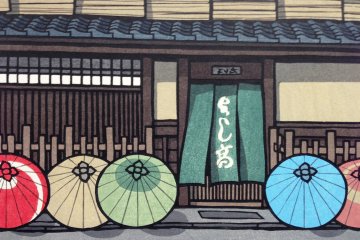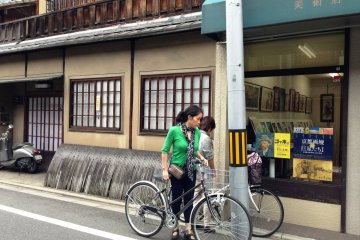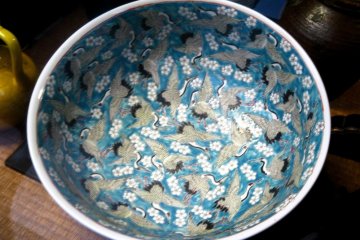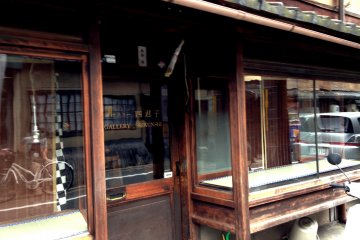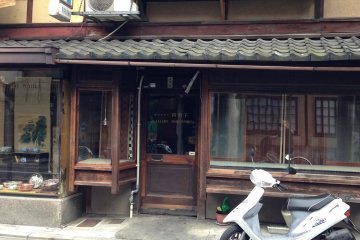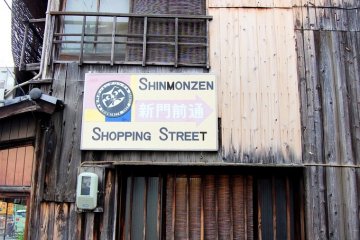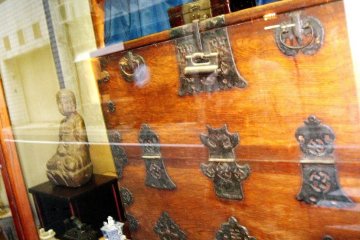Just moments from the gift shops and geisha of Hanami dori and Shirakawa canal are two hidden jewels of Kyoto, Shinmonzen dori, “the new street in front of the Gate” and Furumonzen Dori, “the old street in front of the gate”. Their beauty is not immediately obvious, but to the old hands of this ancient capital, the allure lies in some of the most sought after antiques and art prints in Kyoto and Western Japan. Many traditional antique and art shops have stood here for generations, continually finessing their selection of wares. For example, Ezoshi Art Shop and Gallery, while not large, stocks a collection of original and limited collection of traditional and contemporary ukiyo e woodblock and photographic prints that are accessible to both first time and long-time connoisseurs alike, starting from 4000 yen.
Recalling my previous experiences a few years back, seeing Ukiyo e masterpieces for the first time in a rarefied gallery overseas, I couldn’t hold my anticipation as I stepped in to the real thing, a Ukiyo e gallery in the living breathing heart of Gion. It was like seeing art come to life. I perused dozens and dozens of these prints all on top of each other in an open catalog. The very subjects of these woodblock prints, of colored parasols and macha green noren screens flapping in the breeze, was right in front of me, in three dimensions and in living color.
As these back streets zigzag their way behind Gion, the occasional pedestrian and taxi alike will slow down to the quiet pace of these streets, giving them a markedly calmer atmosphere than the buzzy shops at Shijodori main street. Across from Ezoshi Art Shop is Gallery Shikunshi. The word Shikunshi means four true gentlemen, based on Chinese notions of floral nobility. Each of the four plants, ume apricot blossom, take bamboo, kiku chrysanthemum and ran orchid, take their place as symbols of the four seasons, venerated since the Chinese Song Dynasty more than a thousand years ago. Don’t get confused with the Kimono store of the same name, which was situated in Shijo-dori.
Nearby is another institution in the antique district, the R Kita Imari & Kutani Ware store. Many store items reflect the social history of the Japanese applied art world at the time, including westernized utensils like sugar and creamer sets for the export market, mirroring some of the work that Kamisakka Seka did in bridging East and West. Kutani refers to porcelain from Ishikawa, less than two hours by train north of Kyoto. Unlike some of the works from Awaji and Mie, many Kutani porcelains are elaborately decorated in gorgeous blue, gold and red. Likewise, many Imari or Arita porcelain are vividly colored, despite being sculpted on the other side of Japan in Arita, Kyushu, and exported to Europe since the late 17th Century. R Kita also sells old kimono obis and textiles.
Across the Kamogawa is another antique district, along Teramachi dori. Also known as the Temple District, you can find unique handicrafts, such as handmade bamboo bookmarks and tea whisks. Further along is the Ebisugawa Furniture District, where you can find everything old from shops with whose names, if translated into English, would sound quite whimsical, like the “wire and scissors shop”, which retails just about anything metal, except the kitchen sink.



